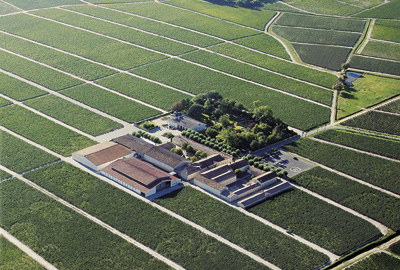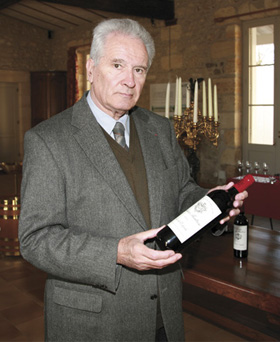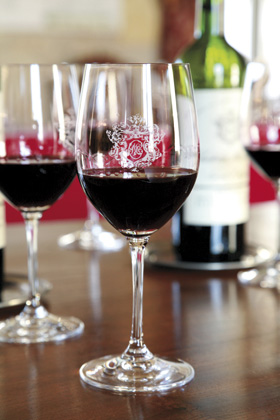
Winegrower Bordeaux
Something is always happeningSaint-Estèphe is a northern winegrowing appellation of the Médoc area, situated on the edge of the Gironde estuary. The major influence this waterway brings to the great growths of this region is well-known… A perfect geographical position, “made to measure” conditions formed by Nature, that nevertheless grant Man the power to perfect this work of art, by selecting for this terroir the most suitable grape varieties. This position in the northern Médoc constitutes a small world apart within the Gironde winegrowing area as a whole, particularly due to Tertiary geological formations found here. Saint-Estèphe’s specific features lie in its limestone bedrock and the benefits provided by pebbly layers of alluvions (eminently generous gravel) which leisurely soak up sunshine during the daytime and therefore protect vine stocks from the vagaries of weather conditions at night. At just the right moment, these pebbles will release the heat they have stored up and this is extremely beneficial for perfect ripening.



The “young” manager had to take a very close look at this estate, fully understand it and plan the future of Château Montrose (gracefully bestowed its name by the ancestor of this domain, Théodore Dumoulin, in the distant past when red wine lee-coloured heather roamed across this land despite bouts of harsh weather …) Today, this estate covers 70 hectares in one single piece of land (this represents 1/6th of the total appellation), lying on the edge of the estuary, especially rich in layers of pebbles at low altitude which form a series of distinct, well-cleared hill crests that present the advantage of natural drainage.
Such a splendid location does not call for profound transformations, just a little good sense, hence the presence of Mr Delmas’ infinite wisdom… Alterations began with a minimal amount of changes made to the lay out of the storage buildings to ensure the best conditions for conserving the divine wine of this estate. In the vineyard, growing methods now encourage deep rooting for the vine stocks, forcing roots to dig down to seek water that rises by capillarity, in the event of hydrous stress. Vines which are too old or affected by wood diseases are uprooted (every 30 to 40 years) in order to purify the soil. After a period of three years, vines are planted again. The decision made for high density plantation (9 000 vines per hectare), necessitates encouraging competition between vine stocks, restricting each branch to holding three grape bunches; this has the result of preventing grey rot and enables the grapes, by their concentration in sugar, to reach a perfect stage of ripeness…Because they are undoubtedly the finest ambassadors of wine all over the world, Jean-Bernard Delmas has introduced specific tastings for each category of consumer as well as for professionals in the industry, with specialised tasting sessions for restaurateurs and sommeliers.
Jean-Bernard Delmas is undoubtedly one of life’s modest geniuses working in favour of excellence and good taste worldwide!
Château Montrose
33180 Saint-Estephe
Tél. : 05 56 59 30 12
www.chateau-montrose.com